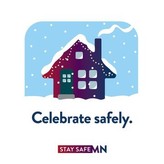| View this as a webpage Minnesota Department of Health December 30, 2021 CDC Isolation and Quarantine Updates On Monday, Dec. 27, CDC announced they are updating recommendations for isolation and quarantine to shorten the recommended time for how long people should stay home and away from others. For details, refer to CDC's media statement: CDC Updates and Shortens Recommended Isolation and Quarantine Period for General Population. Once additional guidance is available from CDC, we will update our Minnesota guidance and materials to align with these new recommendations. Read MDH's media statement from Monday: Statement on CDC updating isolation and quarantine time period recommendations. Throughout the COVID-19 pandemic, officials have been following the science and updating public health recommendations to best reflect the current state of the pandemic. Taking steps to prevent spread of COVID-19 remains important so we can reduce severe illnesses and deaths and protect our health care system. We continue to recommend that people get vaccinated, get a booster when eligible, get tested when recommended, wear masks in indoor public places, wash hands frequently, and stay home when sick.  Holiday Reminders
As Minnesotans prepare for more holiday gatherings, regardless of vaccination status, it is essential that we all use multiple layers of protection to avoid the worst impacts of Omicron to protect our family, friends, and neighbors.
| - Get vaccinated
Minnesotans age 5 and up can be vaccinated. Vaccines are the best way to protect yourself and your loved ones — especially those who can't be vaccinated and children under 5. Find COVID-19 Vaccine Locations for the whole family. - Get boosted
All Minnesotans 16 and older should get a booster when they are due (six months after receiving Pfizer and Moderna, and two months after receiving Johnson & Johnson). Researchers believe the Omicron variant is more transmissible than previous variants, but getting fully vaccinated and boosted significantly increases protection against severe illness or death from infection. Learn more at About COVID-19 Vaccine: Booster shots. - Get tested
Even if you're not experiencing any symptoms, test before gatherings to make sure you're not spreading the virus to others unknowingly. Take advantage of one of the many free testing options the state has to offer. Find Testing Locations or head to your local clinic or pharmacy. If you are using an over the counter at-home rapid test, use it as close to your gathering as possible. If you test positive, no matter what kind of test, stay home. If you test negative, you should get tested again if you develop symptoms. Learn more about testing options are available at COVID-19 Testing. - Stay safe
Wear a well-fitting mask while traveling and in indoor public settings like a grocery store, a shopping mall, or a school. Wash your hands and do your best to avoid crowded indoor spaces before getting together with family and friends — especially high-risk loved ones and children under 5 who can't be vaccinated. Know the vaccination status of those with whom you are gathering to make sure everyone is safer when together. Minnesota Department of Health (MDH) Materials We are adding new videos, print materials, and translated documents often. Check out the pages below to view, download, or print these resources. | 
No comments:
Post a Comment